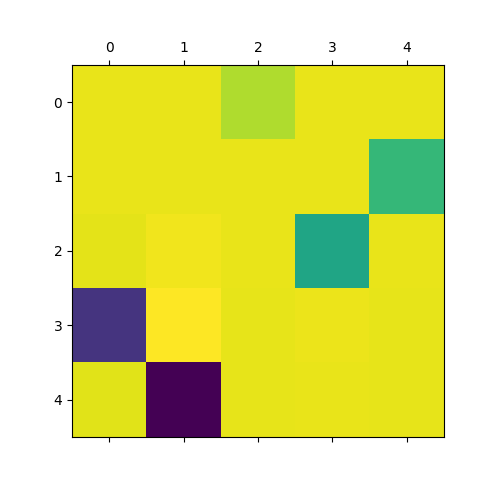Note
Click here to download the full example code
A simple tutorial on joint diagonalization¶
We generate some independent signals with different powers. The signals are then mixed, and their covariances are computed. Joint diagonalization recovers the mixing matrix.
# Authors: Pierre Ablin <pierreablin@gmail.com>
#
# License: MIT
import numpy as np
import matplotlib.pyplot as plt
from qndiag import qndiag
rng = np.random.RandomState(0)
We take 10 different bins, and 5 sources. We generate random powers for each source and bin
Next, we generate a random minxing matrix A, and for each bin, we generate sources s with the powers above, and observe the signals x = A.dot(s). We then store the covariances of the signals
We now use qndiag on ‘covariances’ to recover the unmixing matrix, i.e the inverse of A
B, _ = qndiag(covariances)
unmixing_mixing = np.dot(B, A)
plt.matshow(unmixing_mixing) # Should be ~ a permutation + scale matrix
plt.show()

Total running time of the script: ( 0 minutes 0.095 seconds)
